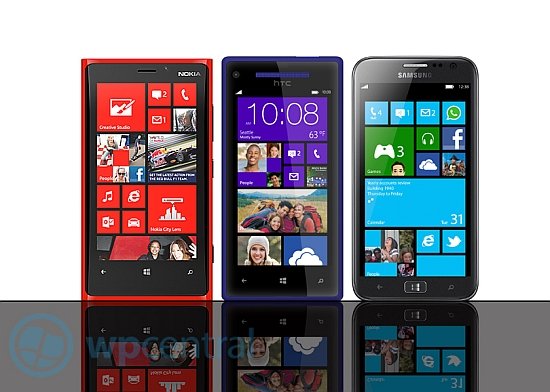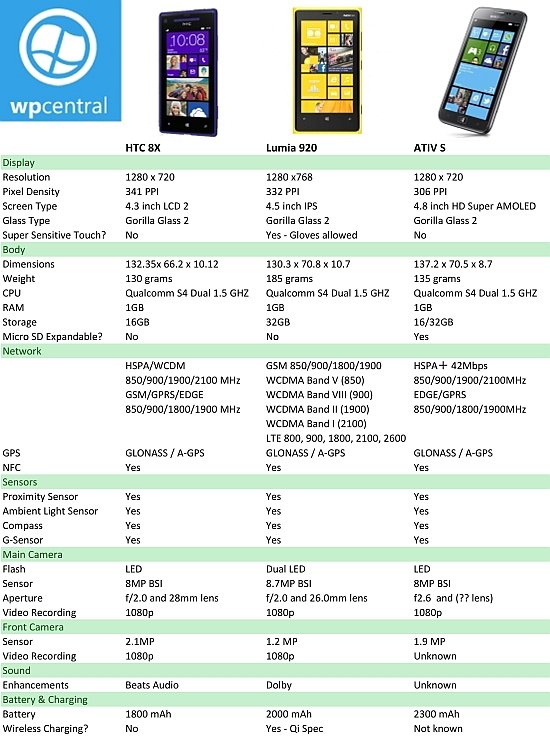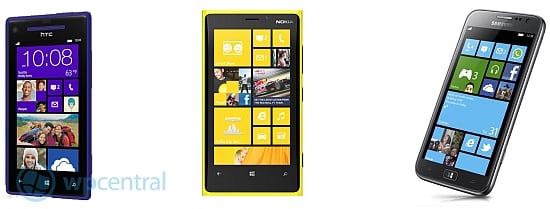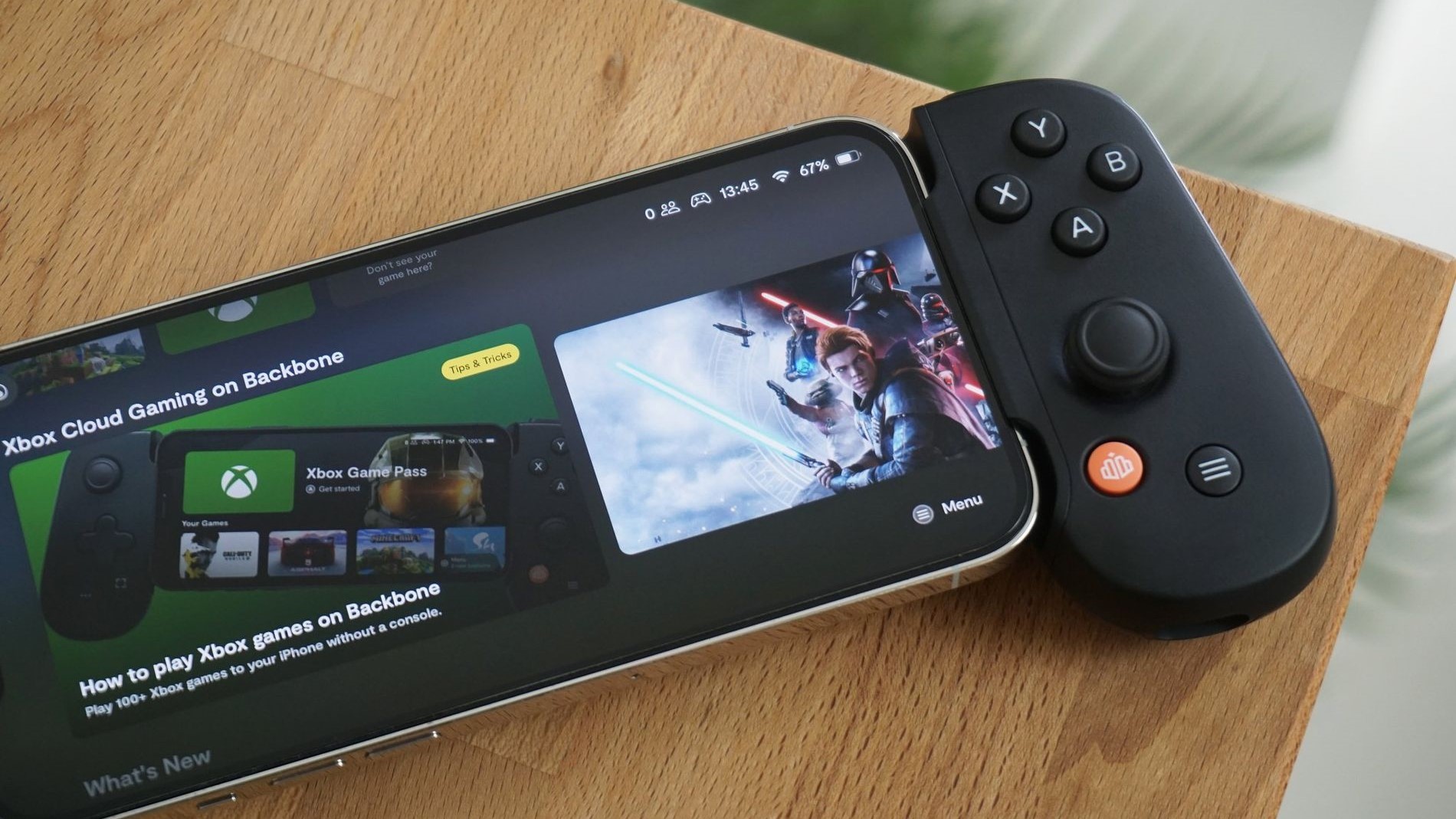Hero Windows Phones compared: HTC 8X, Samsung ATIV S, and Nokia Lumia 920

Yesterday saw the unveiling of the HTC 8X and with that, we now have the full picture of what devices now form the top tier of the Windows Phone 8 line-up. There is still one launch partner, Huawei we have yet to hear from but initial indications are that they will be releasing a device aimed near the mid to low end of the market.
We have already drawn up a comparison of the 8X and the Lumia 920 but many have asked that we rightly add the super slim Samsung into the mix. The ATIV S is every bit a flagship device bosting some extremely appealing specifications, let’s see how they all compare…
Below we have compiled the headline features of the heavyweight contenders; some details for the ATIV S were hard to come by but be sure we'll add those in as soon as we can. Bluetooth will remain unlisted for now until more details come to light with the full reveal of Windows Phone 8. We do know that the Lumia 820 and 920 have been certified for 4.0

We’re sure you’ll agree with us when we say that these three devices pack some great specs. With those, we see a huge shift in capabilities over current Windows Phone 7.5 era handsets. With Windows Phone 8 comes multi core CPU capability, expandable storage, higher screen resolutions and NFC. The big three have most of these bases covered with the exception of the expandable storage but how do they compare when we get right into it?
Size And Weight
With mobile devices, the electronics package and the casing decisions of the designers are critical to its overall form factor, add one thing and it gets heavier, change the case type and it can get lighter. Swings and roundabouts and with these three we see that clearly. For many of us, how this feels when in the hand is going to be what decides this one.
Coming in at the top of the three is the Lumia 920 at 185grams. It’s not the tallest out of the three but those fancy optics and wireless charging coils, combined with the polycarbonate unibody mean it takes it on the nose for the weight.
Get the Windows Central Newsletter
All the latest news, reviews, and guides for Windows and Xbox diehards.
Second heaviest is the Samsung ATIV S, although when we say heavy that means 135 grams, that’s 50grams lighter than the 920, it’s also the longest phone due to that 4.8” screen but conversely also the thinnest at a slender 8.7mm thick.
The HTC 8X is the lightest of the three at 130 grams and a touch longer than the Lumia 920. It also has the smallest screen size, coming in at 4.3”, its those swings and roundabouts...
Screen Technology
As these are all high end devices they all boast very high resolution displays. The HTC 8X and the ATIV S opt for the fairly standard 1280 x 720. The Lumia 920 shoots right for the top with a 1280 x 768 panel but looses its place at the top to the HTC 8X in the pixel density battle. The HTC 8X packs in a whopping 341 PPI into its 4.3” screen. All three devices have fantastic screen technology that should really pack a punch when combined with that beautiful typography based UI we call Metro.
The Lumia 920 does have a few tricks up its sleeve though which could take it beyond the other two. First being its adoption of the Super Sensitive touch, this allows for touch screen operation with keys, gloves and fingernails. Second Nokia boast of improving the response time of the display, meaning less blurring and even clearer movie playback. Beauty though, is in the eye of the beholder and some folks simply prefer different displays, but its unlikely any of these displays will disappoint.

Cameras
The camera sensors on the 8X and the ATIV S are both the same as in their Android devices the One X and the Galaxy S III so what we know is that they will be more than capable of producing fantastic images. The Lumia 920 on the other hand is packing a new 8.7MP sensor with optical image stabilisation technology. From what we have seen thus far, it could be the best camera on a smartphone, period. A special mention has to go to the HTC 8X as it will include a dedicated chip to improve camera response times and the front facing camera is wide angle allowing much better self-taken group shots. Whatever your camera requirements are, there should be something here for everyone.
Other features to consider
The Lumia 920 has the Qi wireless charging capability, allowing you to put your phone on its royal pillow at times when it needs a top-up, no more USB cables. It’s a great feature that we suspect many will love, if this tech takes off and we see coffee shops and other public places adopt charging stations it could mean the end to many battery worries. Unfortunately the HTC 8X doesn’t have any support for this standard. Whilst digging around I found that the Samsung Galaxy SIII on which the ATIV S is based does have inherent wireless charging capabilities, I was unable to confirm at time of writing if this will be available in the ATIV S. If it is, it may just be a case of buying a kit to enable it but don’t get your hopes up.
Expandable storage comes up time and again when looking at these specs and it’s only the ATIV S that will allow any expansion via Micro SD. We still don’t know too much about how this will work or what restrictions might come along with that capability. The HTC 8X is fixed at a rather pedestrian 16GB which is fine for most, but for those that want to watch films or have extensive music collections things might get tight. Both the Lumia 920 and ATIV S are kitted out with 32GB from the start, which is very generous.
Over to you
These are only the specifications, we still need to get these devices and fully review them to get the full picture. Until then, we’d really like to know what headline features you’ll need in your next phone. What ones you don’t care about and anything else you’d like to sound off about. Please use the comments bellow.

